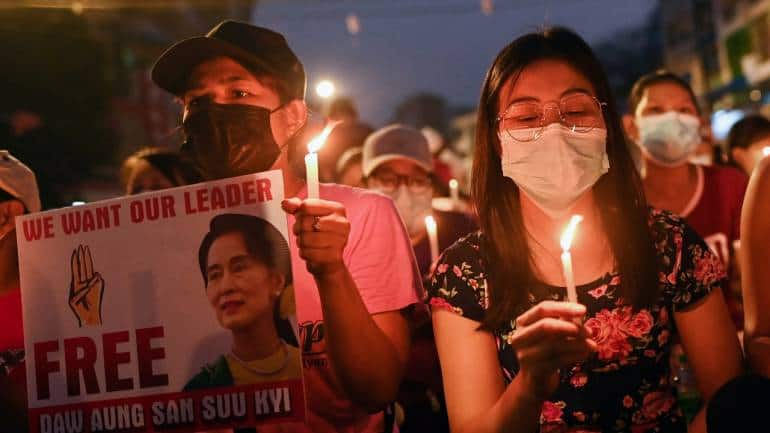
In-Depth | What led to Myanmar's military coup and how India feels the heat

In-Depth | What led to Myanmar's military coup and how India feels the heat
Civil unrest has gripped Myanmar after its military ended the Southeast Asian country’s decade-long dalliance with democracy with a coup d’état on February 1.
In an early-morning raid ahead of a scheduled meeting of the country’s newly elected Parliament, armed forces seized full control of the government after arresting Aung San Suu Kyi and top members of her National League for Democracy (NLD) party.
Known as the Tatmadaw, the military later announced that it would remain in power for one year, with ultimate authority resting with Senior General Min Aung Hlaing.
This triggered nationwide protests by people demanding the return of the civilian government led by elected leader Suu Kyi. At least 320 people have been killed as security forces used lethal force to quell unrest, according to the Assistance Association for Political Prisoners (AAPP) activist group. The group says thousands of people have been detained since the coup.
Amid the violence and protest, more than 1,000 people have crossed into India’s Mizoram state bordering Myanmar. This include police personnel who said they fled fearing persecution after disobeying the military junta’s orders to shoot protesters.
This poses a diplomatic challenge for India, which has close relations with the Tatmadaw. Besides this, the arrivals from Myanmar have also generated some disagreement between Centre that wants to keep them out and Mizoram government that is keen to provide assistance in line with local sentiment. Therefore, it appears that the heatwave of protest in Myanmar is reaching India in several ways. Before discussing the impact on India, let’s understand why the military junta launched coup d’état, country’s political situation and people’s reaction to it in details.
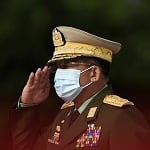
It all began with the country’s independence from British colonial rule in 1948. In 1962, Military leader Ne Win staged a coup and ruled the country through a junta for many years. After four decades of independence, Aung San Suu Kyi, daughter of an independence hero, returned to her home country as pro-democracy protests were erupting against the junta in 1988. The next year, she was put under house arrest.
Two years later, Suu Kyi-founded NLD won a landslide victory in elections. Although the military refused to hand over power, her effort won her the Nobel Peace Prize for the peaceful struggle.
In 2010, Suu Kyi was freed from detention and two years later she won a by-election to take her seat in Parliament, holding public office for the first time.
In 2015, the NLD won a sweeping victory in the first openly held general elections in 25 years. The military retained significant power under a constitution that also barred Suu Kyi from the presidency. The position of state counsellor was created for her to lead the government.
Soon after the country began its transition to democracy, Rohingya militants launched attacks across Rakhine state. The military responded with a massive crackdown on the Rohingya Muslim people, who began fleeing in hundreds of thousands into Bangladesh.
A genocide case was filed against Myanmar at the International Court of Justice (ICJ) over its expulsion of Rohingyas, which was defended by Suu Kyi in December 2019.
Ahead of the November 2020 elections, Thomas Andrews, the United Nations human rights investigator to Myanmar, said polls will fail to meet international standards because of the disenfranchisement of hundreds of thousands of Rohingyas. Army chief Min Aung Hlaing also said that the civilian government was making “unacceptable mistakes” in the run-up to the election, the second warning in two days about potential bias in the vote. However, the poll was conducted, with the NLD capturing an outright majority in Parliament.
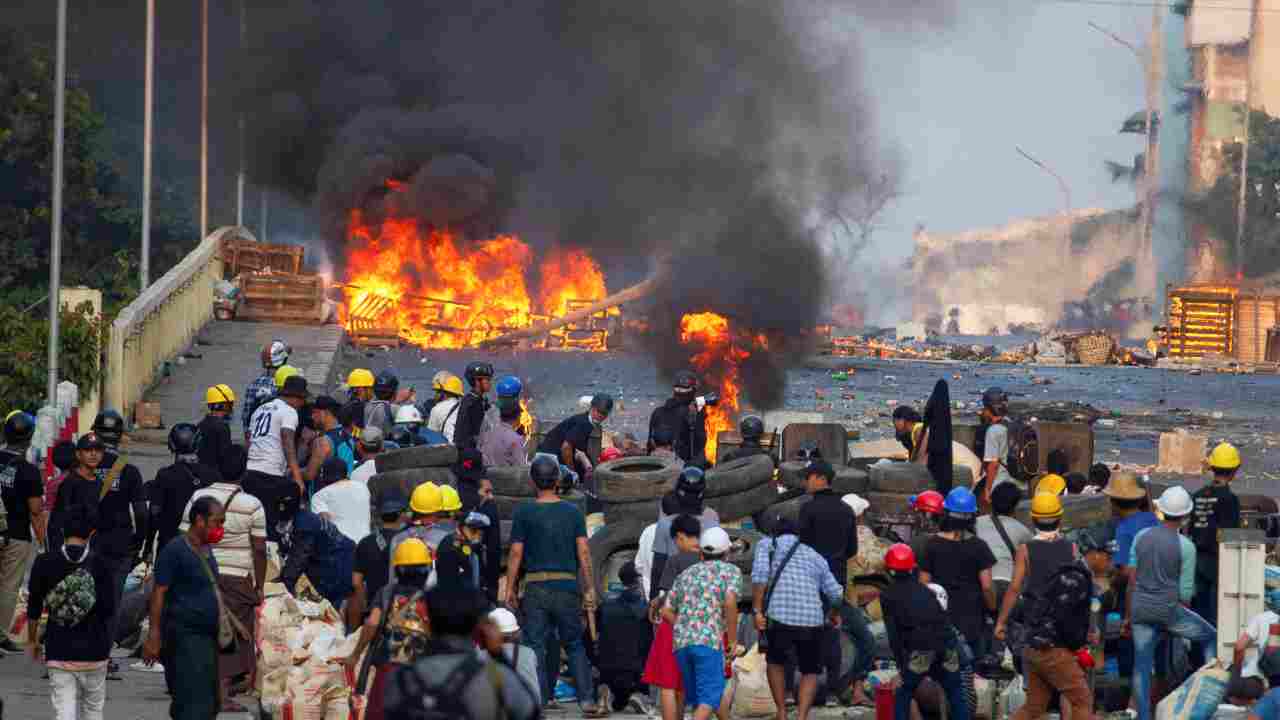 Anti-coup protesters stand at a barricade as they clash with security forces on Bayint Naung Bridge in Mayangone, Yangon, Myanmar. (Image: Reuters)
Anti-coup protesters stand at a barricade as they clash with security forces on Bayint Naung Bridge in Mayangone, Yangon, Myanmar. (Image: Reuters)
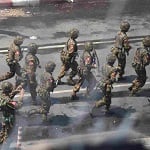
The possibility of the coup emerged in January 2021 after the military, which had tried in the country’s Supreme Court to argue that the November 8 election results were fraudulent, threatened to “take action” and surrounded the houses of Parliament with soldiers. The election commission rejected the military allegations of fraud in the polls, saying there was no evidence to support the claims.
On February 1, Myanmar military took control of the country under a one-year state of emergency, citing the government’s failure to act on its fraud claims. Suu Kyi, President Win Myint and other senior figures from the ruling party were detained in the early-morning raid.
The junta removed 24 ministers and deputies, naming 11 replacements.
Why did the military launch the coup when it already had a lot of power?The military had drafted the 2008 Constitution, in which the military enjoyed complete autonomy from the civilian government, retained power over key ministries, and had an effective veto over all legislation in Parliament. So, why did the military make the February 1 move? Among many theories, a plausible explanation for the coup seems to be the personal political interests of the commander-in-chief, Senior General Min Aung Hlaing. According to Penn Today, Aung Hlaing was supposed to retire from the military imminently and the coup seems to be a last-ditch attempt by him to hold onto political power.
Civil unrest erupted in Myanmar against the February 1 coup with hundreds of thousands of people taking to the streets in Yangon and other cities in the biggest show of public outrage since the 2007 protests that led to democratic reforms.
Myanmar’s military responded with a crackdown, which according AAPP’s data, killed at least 320 people.
On March 24, the junta freed hundreds of people arrested in its crackdown. There was no word from authorities on the numbers, but AAPP said 628 people were released after more than 2,900 had been arrested since the coup.
However, the military’s actions appeared to be of little to no use as Myanmar has been rocked by almost daily protests now.
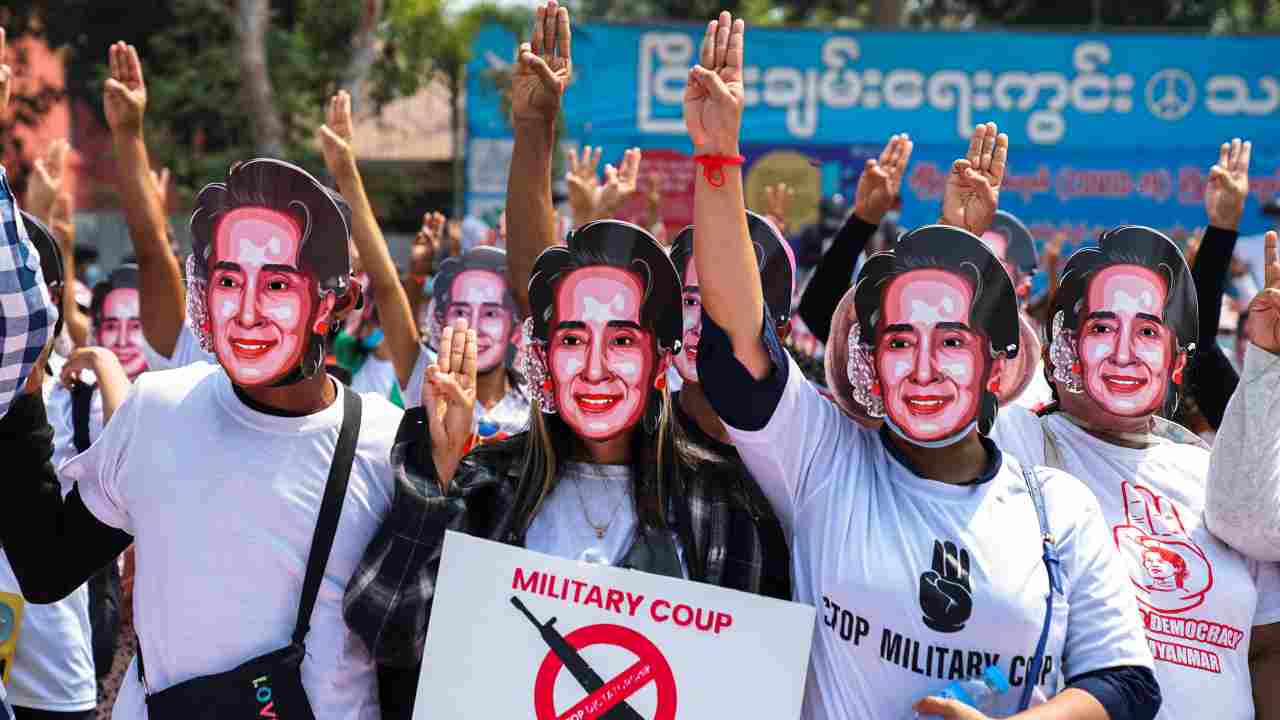 Protesters wearing masks depicting ousted leader Aung San Suu Kyi, flash three-finger salutes as they take part in a protest against the military coup in Yangon, Myanmar. (Image: Reuters)
Protesters wearing masks depicting ousted leader Aung San Suu Kyi, flash three-finger salutes as they take part in a protest against the military coup in Yangon, Myanmar. (Image: Reuters)
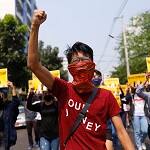
Amid the nationwide protests, strikes and sanctions following the coup, Myanmar’s economy is expected to contract by 10 percent in 2021, World Bank has estimated.
To protest against the military’s move, the people of Myanmar have targeted the economy as part of their civil disobedience campaign, crippling the banking system. The protesters also encouraging foreign investors to pull out until the democratically elected government is restored.
Meanwhile, the junta has regularly shut down the internet in an effort to quell protests, further undermining economic activity.
The forecast is a sharp reversal from the World Bank’s previous economic update in October, when it predicted Myanmar’s economy would grow by 5.9 percent, one of the strongest rates of expansion in the region.
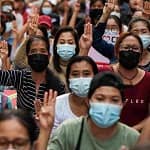
Soon after the coup, the United States and several other countries voiced alarm and concern, demanding that Myanmar’s military immediately free Suu Kyi along with other detained government officials and honour the November election results.
The US and the United Kingdom imposed sanctions on military-controlled conglomerates in Myanmar on March 25 as security forces were reported to have killed five more pro-democracy protesters in an unrelenting crackdown on dissent.
In Washington, the US Treasury Department announced new sanctions targeting Myanma Economic Holdings Public Company Limited and Myanmar Economic Corporation Limited. Both are part of a vast military-controlled network which spans a variety of sectors from mining to tourism and has enriched the generals.
In a move coordinated with the United States, the UK said it would target Myanma Economic Holdings Ltd., citing serious human rights violations against civilians and its association with senior military figures.
Earlier US sanctions had hit individuals linked to the coup, while junta leader and army commander General Min Aung Hlaing was already under restrictions due to earlier human rights issues.
The European Union also announced sanctions on 11 individuals on March 22 and is expected to target the conglomerates soon.
The new US ambassador to the United Nations, Linda Thomas-Greenfield urged the international community to ramp up pressure on Myanmar’s military to restore democracy.
Southeast Asian foreign ministers urged a halt to violence and the start of talks on a peaceful solution in Myanmar.
Australia also called for the immediate release of Suu Kyi and other senior leaders who are being detained by the military.
Other countries, including Canada Japan and New Zealand have also released statements calling for de-escalation and the release of those detained.
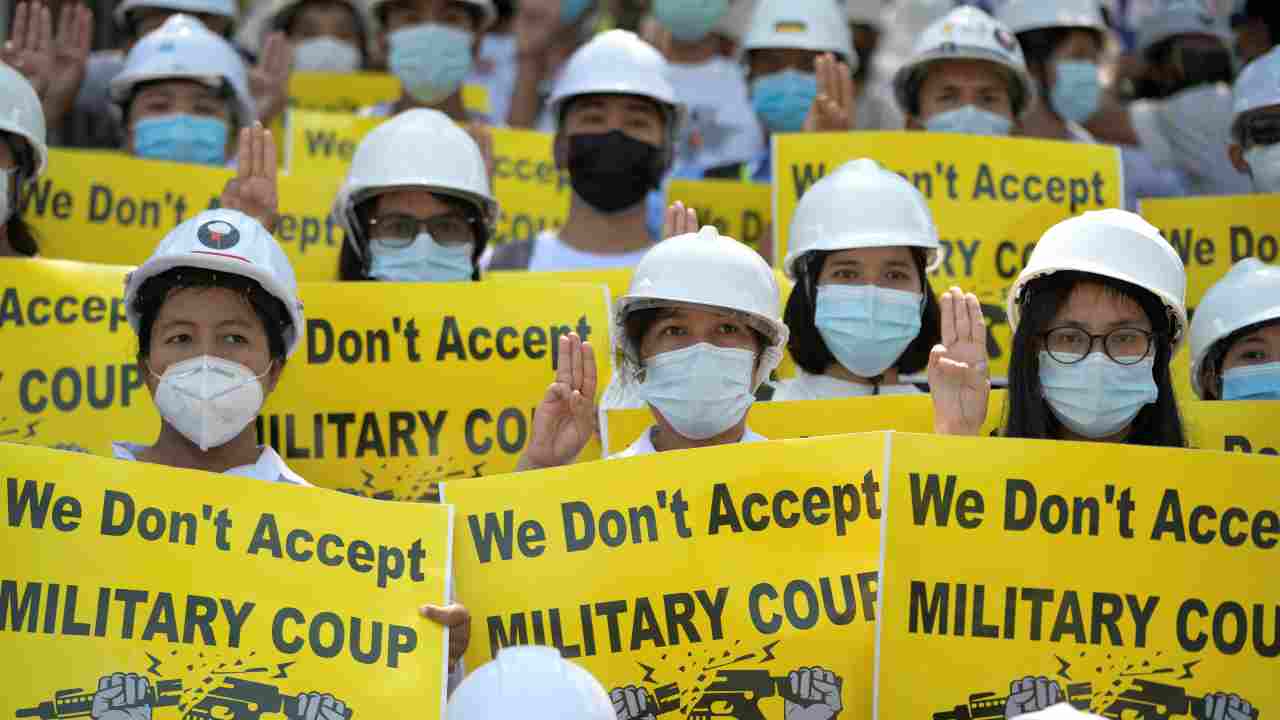 Demonstrators hold placards as they rally against the military coup in Yangon, Myanmar. (Image: Reuters)
Demonstrators hold placards as they rally against the military coup in Yangon, Myanmar. (Image: Reuters)
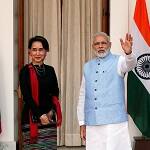
India expressed deep concern over the coup and detention of top political leaders. India’s concern has intensified with the influx from Myanmar.
More than 1,000 people fleeing violence in Myanmar have crossed into India's Mizoram since late February, reported news agency Reuters citing lawmaker K Vanlalvena on March 20. This includes about 280 Myanmar police and more than two dozen fire department personnel, according to a senior police official in Mizoram.
Why are people from Myanmar taking shelter in India and how?According to a delegation of two Member of Parliament and representatives of Mizoram's ruling Mizo National Front, refugees from Myanmar faced atrocities at the hands of the military after the coup.
Some police personnel have said they fled Myanmar because they feared persecution after refusing to obey the military junta’s orders to shoot protesters, according to Reuters.
The report further suggested that a secret network of activists and volunteers is helping hundreds of defecting Myanmar policemen move into the relatively safe Mizoram. Volunteers on both sides of the border have helped them escape by car, motorcycle and on foot across dense forests, as per the report.
 Firecrackers explode as protestors take cover behind a barricade during a demonstration against the military coup in Mandalay, Myanmar. (Image: Reuters)
Firecrackers explode as protestors take cover behind a barricade during a demonstration against the military coup in Mandalay, Myanmar. (Image: Reuters)
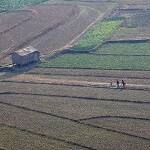
The influx from Myanmar could pose a diplomatic challenge for India, which has close relations with the Tatmadaw.
Vivek Katju, former secretary in the Ministry of External Affairs, told Moneycontrol that what is interesting is how the Mizoram government has taken up the matter and gone public in protecting them, even when the Centre wants to keep them out.
The arrivals from Myanmar have generated some disagreement between Centre, which wants to keep them out, and Mizoram's state administration that is keen to provide assistance in line with local sentiment.
Mizoram Chief Minister Zoramthanga has requested Prime Minister Narendra Modi to personally intervene in the matter to provide asylum to the political refugees on humanitarian grounds, according to an official at the Chief Minister's Office.
In a letter on March 18, the chief minister said the March 10 advisory by Ministry of Home Affairs to Mizoram, Nagaland, Arunachal Pradesh and Manipur was not acceptable to his state. "This (MHA advisory) is not acceptable to Mizoram. I understand that there are certain foreign policy issues where India needs to proceed cautiously. However, we cannot ignore this humanitarian crisis," Zoramthanga said in the letter, a copy of which was accessed by news agency PTI.
The MHA had written a letter to chief secretaries of the four states and DG Assam Rifles to stay alert against influx from Myanmar.
The chief minister, also the leader of the ruling MNF, further said that the areas in Myanmar bordering Mizoram are inhabited by the people of Chin community who share ethnic ties and have had close contact with the people of the state even before India became Independent. Mizoram shares a 510-kilometre porous border with Myanmar's Chin state and most of the Burmese nationals, who have taken refuge in the state, belonged to the Chin, also known as the Zo, community.
Meanwhile, the Zo Reunification Organisation (ZORO) has urged MHA to withdraw its order directing four Northeast states to guard against the influx of people from Myanmar. They have also demanded that the Centre grant refugee status to these people.
Amid growing disagreement between the Centre and Mizoram government, politics has begun with the opposition Congress party backing CM Zoramthanga on the issue of Burmese nationals taking refuge there and saying that the MHA order seeking to stop illegal migration from Myanmar is unacceptable.
The MNF is a part of the BJP-led North East Democratic Alliance (NEDA), the regional version of the NDA. However, the two parties do not work together at the state government level.
Following the Mizoram government’s action, it will be interesting to see how the Centre will handle the situation, Katju said.